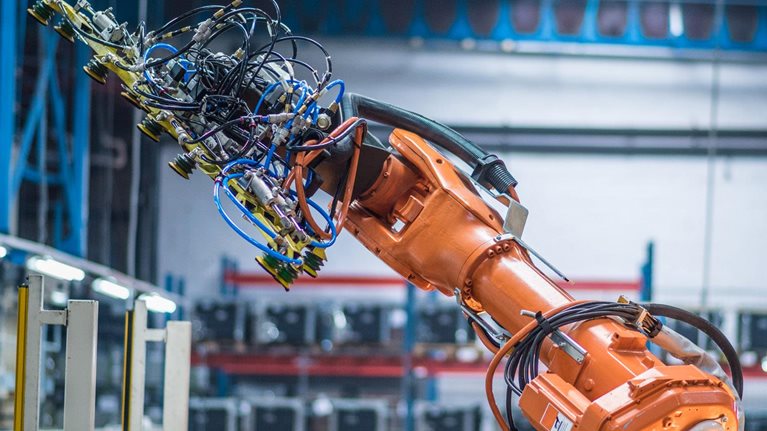For some time now, there has been talk about how the $16.2 billion1 global industrial-robotics market is poised for dynamic growth—unit shipments are forecasted to rise at a compound annual rate of no less than 14 percent from 2019 to 2021. Thanks to the 2011–18 uptick in robot sales, the buzz around robotics is loud. However, little is known about which specific qualitative factors might be responsible for this expected growth, and the growth trajectory is uncertain.
What is known is that the industry has been growing rather steadily since the 1960s. After the first industrial robots appeared, during that decade, a real growth spurt occurred as automotive OEMs used them in weld shops. We now see a second growth spurt in the 2010s. Underlying it are fundamental changes in the industry and the economic environment: dramatic developments in technology and new applications, as well as the global megatrends of rising labor costs, increasing labor turnover and shortages, decreasing equipment costs, and global competition.
Would you like to learn more about our Advanced Electronics Practice?
Against this backdrop, we launched a research effort that led to our new report, Industrial robotics: Insights into the sector’s future growth dynamics. This effort sought to do the following:
- describe the characteristics of the global industrial-robotics space and market
- gain insights into which qualitative factors are propelling the current and expected growth dynamics
- identify options for unleashing the market’s full growth potential and discuss their implications for OEMs and systems integrators
Our report draws on extensive research and on the experience of our McKinsey colleagues, as well as public data and insights from interviews with OEMs and other industry experts, which provided important insights into the robotics sales forecasts currently available. The report is intended not just for robot end users or those responsible for manufacturing, but also for leaders across a variety of functions and areas, including operations, the supply chain, process engineering, and services.
Our extensive research with end users revealed several challenges to greater use, however (exhibit). To unleash the adoption of robotics in the ecosystem, OEMs and systems integrators could develop solutions across three main lenses, each explained in more detail in the full report:
Simpler to apply. Potential end users will be increasingly likely to envision use cases, as robots and the talent needed to deploy them become more available. Simulation software can further close the gap between conceivability and installation by helping end users prove their designs before committing themselves to the final investment.
Simpler to connect. Readily available industrial connections, simpler integration of end effectors, systems I/O, and communication can make robotics easier to implement within existing structures.
Simpler to run. Interactive or interconnected interfaces put even complex programming tasks in the hands of frontline operations, making factories less dependent on expert suppliers and engineering departments.

In addition, OEMs and systems integrators could accelerate the industry’s growth by promoting robotics-related upskilling and retraining at scale. OEMs and systems integrators can also enhance and elucidate the benefits of robotics—in particular, for small and midsize companies, as a way to add this segment to the customer base.
Download the full report on which this article is based, Industrial robotics: Insights into the sector’s future growth dynamics (PDF–2.9MB).


